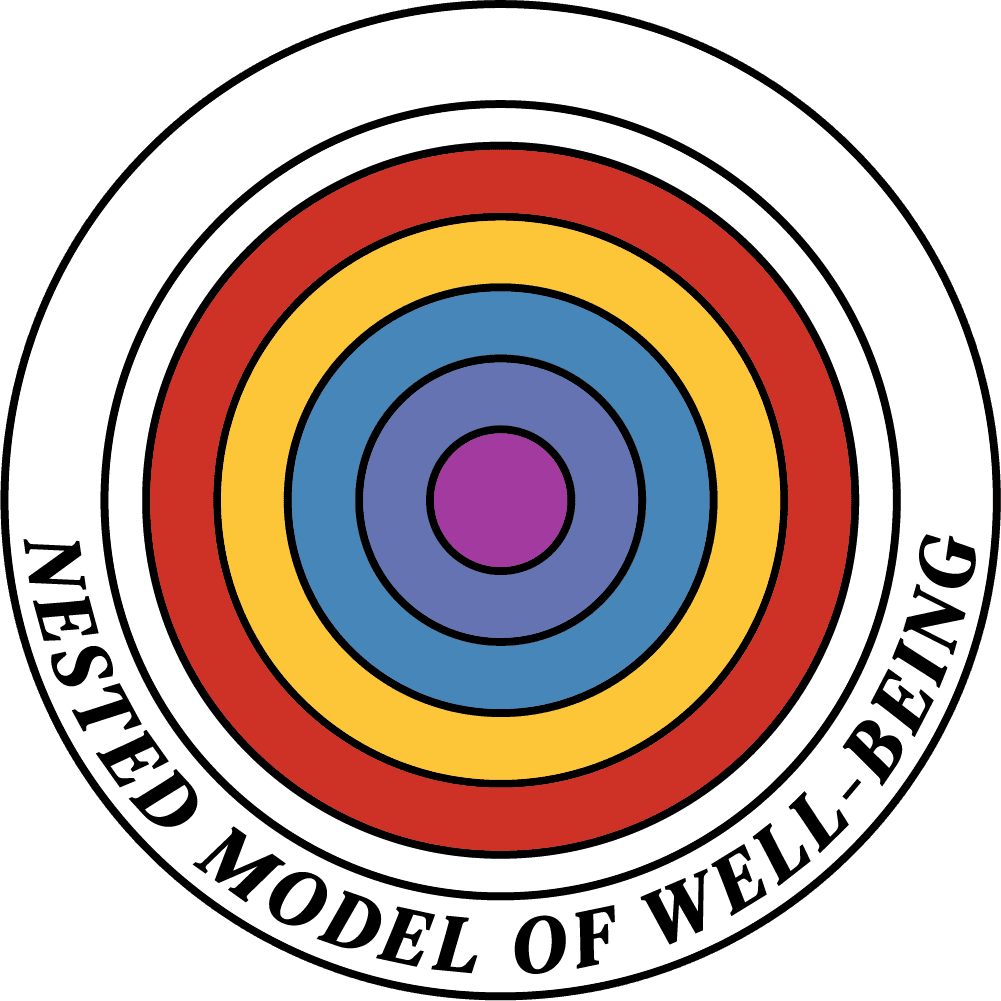The Nested Model of Well-Being is a comprehensive framework in UTOK that outlines human well-being across four layers: subjective well-being, health and functioning, environmental context, and ideological values, emphasizing the alignment of these layers for optimal well-being.
Introduction
The Nested Model of Well-Being is a central concept within UTOK’s Unified Approach to Psychotherapy and forms part of its broader descriptive metaphysical framework. Developed as a metatheoretical model, it serves as an integrated, multi-layered approach to understanding and assessing well-being. By organizing well-being into four nested domains, the model offers a comprehensive lens through which to evaluate human flourishing.
1. Subjective Well-Being
At the core of the model is subjective well-being, which focuses on an individual's emotional experience and their cognitive evaluation of life satisfaction. This dimension includes both general life satisfaction and domain-specific satisfaction (e.g., job satisfaction, relationship satisfaction). Subjective well-being is traditionally understood in psychological research as the balance of positive affect (happiness, joy) and negative affect (stress, anxiety). In the Nested Model, subjective well-being is crucial but not sufficient on its own—well-being requires more than just feeling good or being content with life; it must align with broader contextual factors.
2. Health and Functioning
The second layer is health and functioning, which encompasses both biological health (physical well-being, absence of illness, energy levels) and psychological health (mental clarity, emotional regulation, resilience). This dimension integrates physical and mental health into a holistic framework, considering that one’s ability to function effectively in daily life (biologically and psychologically) is a key determinant of overall well-being. For instance, a person may feel subjectively well but struggle with chronic physical illness or psychological issues that undermine their long-term well-being.
3. Environmental Context
The third layer of well-being involves the environmental context in which the individual lives. This includes the social environment (relationships, community support, work-life balance) and the material environment (financial security, living conditions, access to resources). The Nested Model posits that well-being is deeply connected to one’s immediate surroundings, including socioeconomic status, physical location, and the presence of supportive networks. This layer also encompasses developmental factors, suggesting that well-being changes over time and is shaped by life events and milestones.
4. Ideology and Values
The outermost layer involves ideology and values, which represents the evaluative framework through which individuals assess their lives. This includes personal and cultural values, worldviews, moral systems, and beliefs about what constitutes a good life. According to the Nested Model, well-being is not just about how someone feels or functions but also about how their life aligns with their deeply held values and the values of the surrounding culture. This is where existential questions come into play—such as meaning, purpose, and morality—which are central to well-being in the Nested Model.
Integration Across Layers
The Nested Model emphasizes that true well-being arises when these four layers are positively aligned and integrated over time. For instance, an individual experiencing happiness in their subjective well-being may still struggle with overall well-being if they are facing poor health, live in an unsupportive environment, or their actions are misaligned with their values. Conversely, when all four layers are in harmony, an individual experiences a deeper, more enduring form of well-being that reflects not just temporary emotional states but a meaningful and well-functioning life.
The Nested Model of Well-Being also aligns with Immanuel Kant’s conception of well-being as "happiness with the worthiness to be happy." It suggests that subjective satisfaction is only part of the story; well-being also involves living in a way that is morally, physically, and socially coherent.
Applications
The Nested Model of Well-Being has practical applications in both clinical and theoretical settings. It forms the basis of UTOK’s Well-Being Screen and Checkup System, which functions similarly to a standard medical physical but focuses on psychological and holistic health. This system offers mental health practitioners a structured way to assess and monitor well-being across multiple domains, providing insight into areas of strength and potential need for intervention.
Moreover, the Nested Model is used within UTOK’s Character Adaptation Systems Theory (CAST) and the Wheel of Development, further illustrating its value in guiding therapeutic practice and long-term personal growth.
Links & Resources





